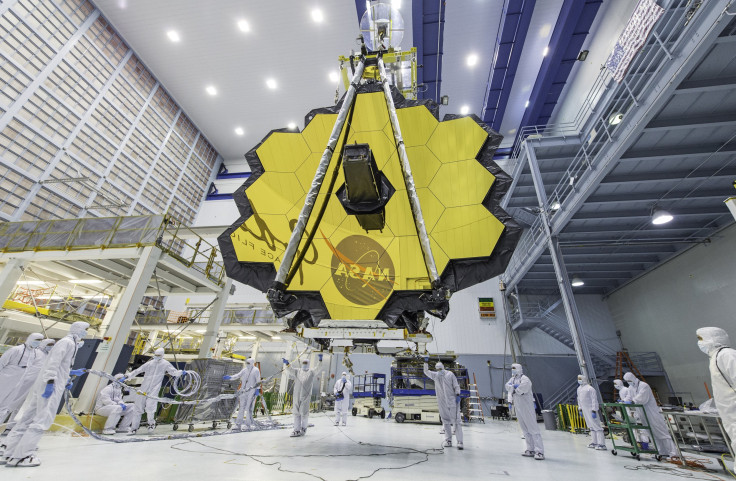NASA’s James Webb Space Telescope Is An Extremely Tough Machine

NASA’s successor to the Hubble Space Telescope, the James Webb Space Telescope, is currently scheduled to launch in the spring of 2019. But before that happens, the space agency needs to make sure the instrument is hardy enough to survive the harsh environment of space and to ensure that, JWST is being put through a variety of tests.
In a statement Tuesday on NASA’s website, the deputy project manager (technical) for JWST, Paul Geithner explained that the mechanical stress from the vibrations during the launch would only be the first of the many stressful conditions the telescope would go through. In addition, JWST would have to also cope with shrinking and expansion, induced by temperature changes in space. This is necessary for the space-borne observatory to survive years in space.
To evaluate JWST’s ability to withstand vibrations, Geithner said the testing team put it through twice the intensity of vibrations that it is expected to endure in space. The test vibrations are created in two ways, one for frequencies from 5-100 Hz and the other for higher frequencies. The first is by putting the telescope on a large platform which is connected to a big electromagnet to produce the shaking. The other is by placing it in an acoustics chamber where large speakers produce vibrations through “literally deafening levels of sound.”
JWST will orbit the sun at a distance of 1 million miles farther than Earth, at a point known as the second Lagrange point, or L2. At an average distance of about 94 million miles from the sun, and with no internal heat to warm it up, the telescope will need the ability to operate fully in the cold environment. Cryogenic testing at NASA checked the telescope at temperatures as low as 10 Kelvin (442 degrees Fahrenheit below zero), Geithner said in the statement.
This cold temperature is actually necessary for the proper working of JWST, which is an infrared telescope. If the telescope’s instruments radiate their own heat, it could interfere with the telescope’s astronomical observations. To ensure that heat from the sun is not absorbed by the instruments, they are shaded by a large sunshield. The five-layered sunshield is the size of a tennis court and is made of a special plastic designed by DuPont.
The sun-facing side of the telescope also faces danger from solar radiation, since the L2 location of JWST will put it outside Earth’s protective magnetic field. To prevent damage to the instruments from charged particles streaming from the sun, electronics on the sun-facing side of JWST are “hardened, shielded and grounded,” Geithner said.
Even the choice of materials to build JWST has an obvious role to play in its sturdiness. For instance, many of the telescope’s mirrors are made from beryllium, an element that is lightweight, stiff, strong and also dimensionally stable around temperatures below 100 Kelvin. That means it would virtually stop shrinking or expanding in the temperature range within which JWST will operate.
Despite all the preventive measures and testing, if something were to go wrong with the telescope after its launch, it would be possible to carry out some servicing, at least theoretically. A robotic arm could be used to grab the telescope at the same place where it will be attached to the rocket that will deliver it to its orbit. But Geithner was pretty clear that “opportunities and benefits of servicing are limited.”
© Copyright IBTimes 2025. All rights reserved.





















